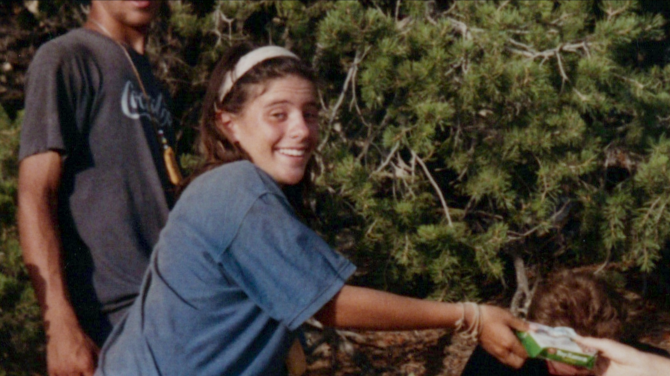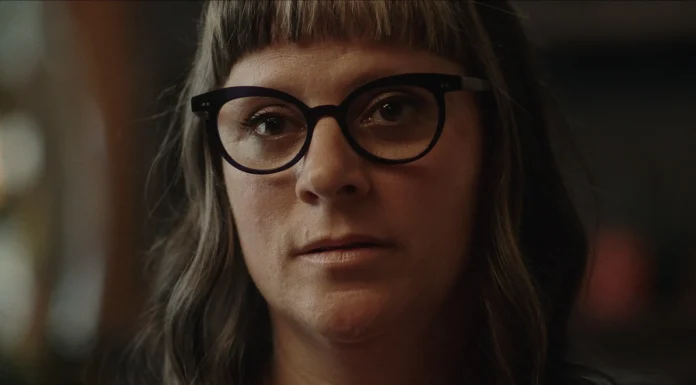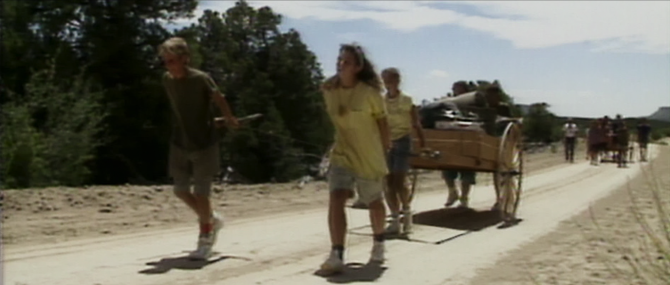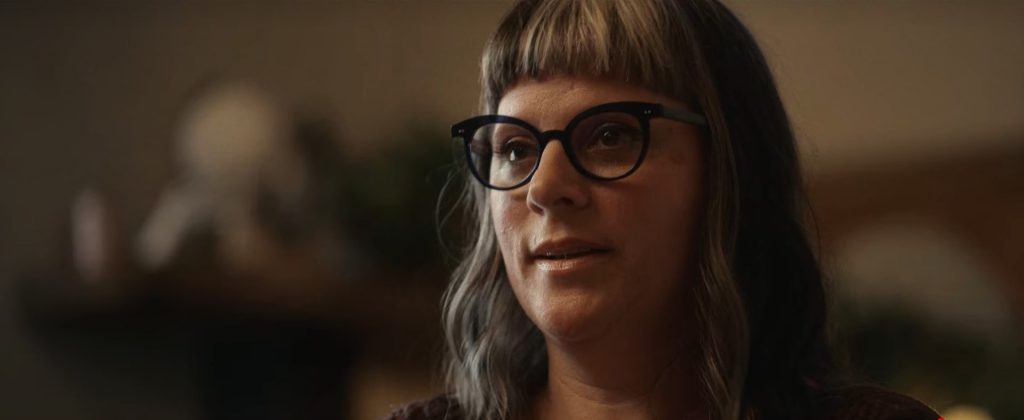Where is Nadine Now – In the gripping narrative of Netflix’s ‘Hell Camp: Teen Nightmare,’ one survivor’s story emerges from the shadows, offering a poignant glimpse into the harrowing experiences at the infamous Challenger Foundation. Nadine, a resilient soul, found herself thrust into a nightmare at the tender age of 15, becoming a victim of the very people she thought would protect her—the ones who orchestrated her forced journey to the brutal Utah wilderness.
The Challenger Foundation, founded by former Navy Sergeant Steve Cartisano, became the stage for her ordeal. In this place, verbal abuse, starvation, and grueling hikes under the scorching Utah sun were the order of the day.
In ‘Hell Camp: Teen Nightmare,’ documentary, Nadine recounts her surreal experience, describing the unsettling night when she woke to towering figures in her room, marking the beginning of a 63-day odyssey that would scar her for life. Transported to the unforgiving Utah desert, she faced deprivation, humiliation, and physical challenges that defy comprehension.
Join us as we unravel Nadine’s story—a journey from darkness to quiet resilience, echoing the untold struggles of those who endured the Challenger Foundation’s twisted version of rehabilitation.
See Also: Hell Camp: How did Kristen Chase Die?

What Happened with Nadine on Hell Camp?
Nadine, a survivor whose life became entwined with the nightmarish reality of the Hell Camp, endured a harrowing journey that unfolded in the Utah wilderness. In August 1989, at the tender age of 15, Nadine experienced a forced abduction orchestrated by her own parents. Two imposing figures stood over her bed, signaling the beginning of a dark chapter that would test her resilience and redefine her understanding of survival.
Her rebellion, characterized by a lifestyle of drinking, partying, and embracing a stoner identity, led her parents to view her as the “black sheep” of the family. Desperate for a solution, they opted for an extreme measure—sending Nadine to a wilderness survival program run by the Challenger Foundation, a notorious camp established by former Navy Sergeant Steve Cartisano.
In her own words, Nadine expressed, “I’ve always been a rabble-rouser, the black sheep of the family. You know, as a kid with no power, the only power you have is your behavior. So, I would act out a bit.” Her rebellion was admittedly in the form of drinking and partying, but it then went to such an extent she could be classified as a stoner, plus her boyfriend was also the town’s troublemaker.
The Utah wilderness, where Nadine found herself stranded, became a battleground for survival. The documentary “Hell Camp: Teen Nightmare” vividly portrays the brutal conditions imposed on the participants. Stripped of basic comforts, the teens were forced to use T-shirts as toilet paper, denied clean water, and subjected to verbal abuse. The infamous philosophy of the camp, founded on breaking down the individual to rebuild them, manifested in physically and emotionally grueling challenges.
In her chilling recollection, Nadine detailed, “I went to sleep thinking I’d be going to school the next day. The house was dark. My parents weren’t there, and I was woken up by two men standing over my bed. They were big. They told me if I tried to run, they will handcuff me. They grabbed me and forcibly removed me from my house” before placing me on a private jet to take me to the middle of a Utah desert. Thus, all she had for survival for the ensuing 63 days were the clothes on her back as well as her wits, which she could use to earn her daily food and water intake — there were no tents, no nothing.
Nadine’s endurance was tested as she marched across the barren landscape in scorching temperatures, covering a staggering 500 miles. Complaints were dismissed as bad attitude, and any sign of weakness was met with punishment. The camp, resembling a dystopian “Lord of the Flies” scenario, pushed participants to the brink.
Upon her parents’ retrieval, the emotional distance was stark—her mother refrained from getting close, a poignant illustration of the toll exacted by the traumatic experience. Nadine’s journey, marked by forced abduction, deprivation, and endurance in the Utah wilderness, stands as a chilling testament to the dark realities of therapy camps like the Challenger Foundation.
In her own words, Nadine has shared, “I understood it was an unsafe situation from the very start. The hardest thing about being there was knowing my parents did it to me. The programme costs my parents over $16,000 (£12,600). That’s a lot of money in 1989. If your own parent doesn’t care about you, nobody does. Who sends their kid to something like that?”
Despite the scars left by the Hell Camp, Nadine has chosen to channel her experiences into advocacy, shedding light on the lasting impact of such programs. Her story serves as a stark reminder of the need to scrutinize and question the efficacy and ethics of extreme therapeutic interventions for troubled teens.
Where is Nadine Today?
Nadine has spent a significant portion of her life grappling with the aftermath of the Hell Camp, emphasizing the challenges she faced in her journey to survive. Her experiences have shaped her perspective, leading her to seek environments where survival is not a constant battle. She acknowledged, “I’ve spent most of my life, just trying to survive. Then I put myself in situations where I have to survive, you know, because that’s what I know. That’s where I’m comfortable.”
Choosing to keep her personal and professional life away from the limelight, Nadine has adopted a low-profile existence. While specific details about her current endeavors remain private, she has demonstrated a commitment to moving beyond the shadows of her past. Her preference for a quiet life reflects a desire to distance herself from the traumatic events that unfolded at the Challenger Foundation’s wilderness camp.
Nadine’s journey after the Hell Camp has been characterized by a deliberate choice to step away from public attention. Despite the challenges she faced during and after her time at the camp, she appears to be focused on personal healing and resilience. While the specifics of her current life may remain undisclosed, Nadine has emerged as an advocate for her fellow survivors, using her experiences to shed light on the lasting impact of extreme therapeutic interventions.
As she continues her journey toward healing and recovery, Nadine stands as a symbol of strength and resilience, demonstrating that even in the face of adversity, individuals can forge a path toward a more peaceful and stable existence. Her commitment to advocacy underscores the importance of critically examining the long-term consequences of programs like the Challenger Foundation’s Hell Camp on the lives of those who endured them.
Also Read: What Happened to Steve Cartisano’s Kids? Where Are They Now?









